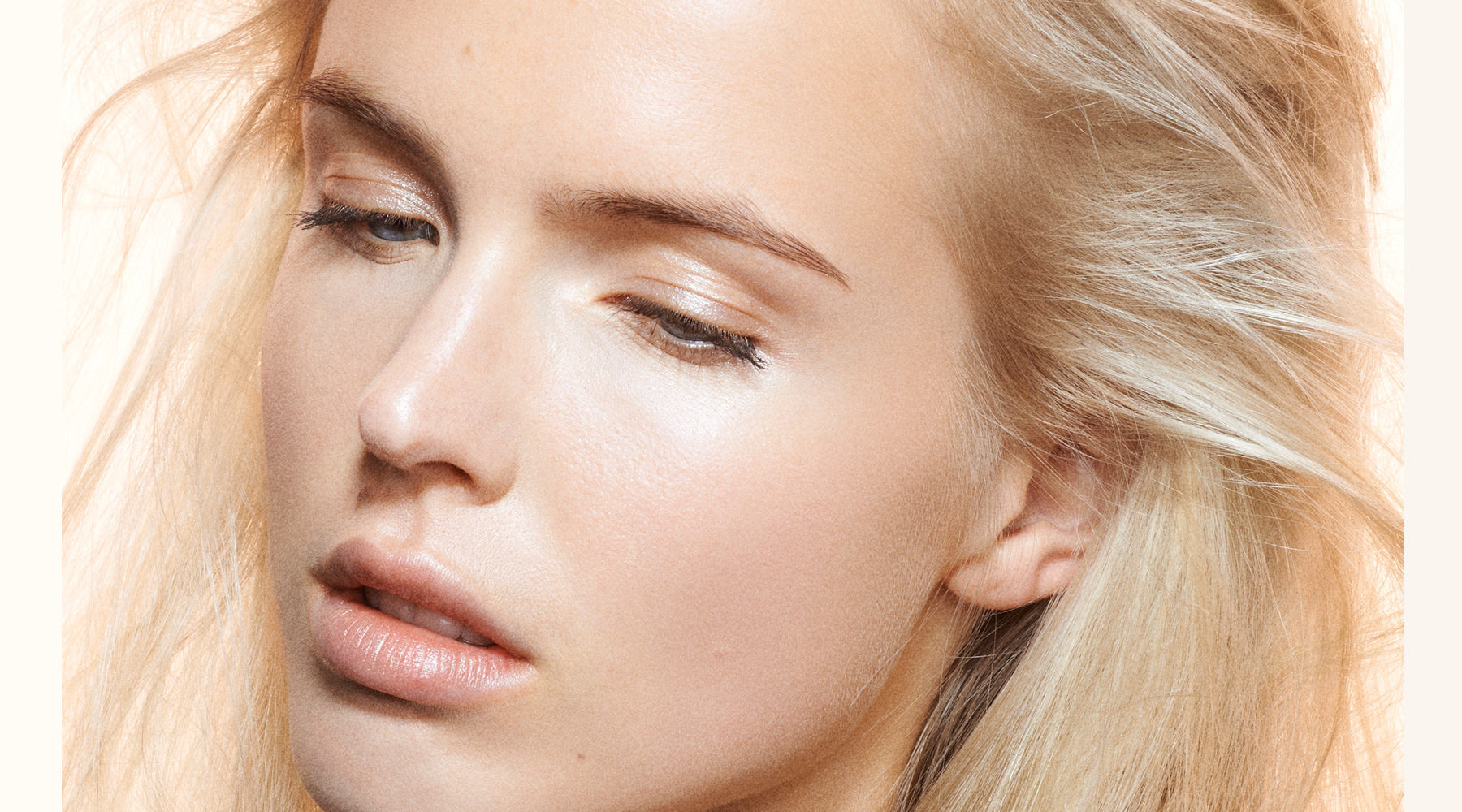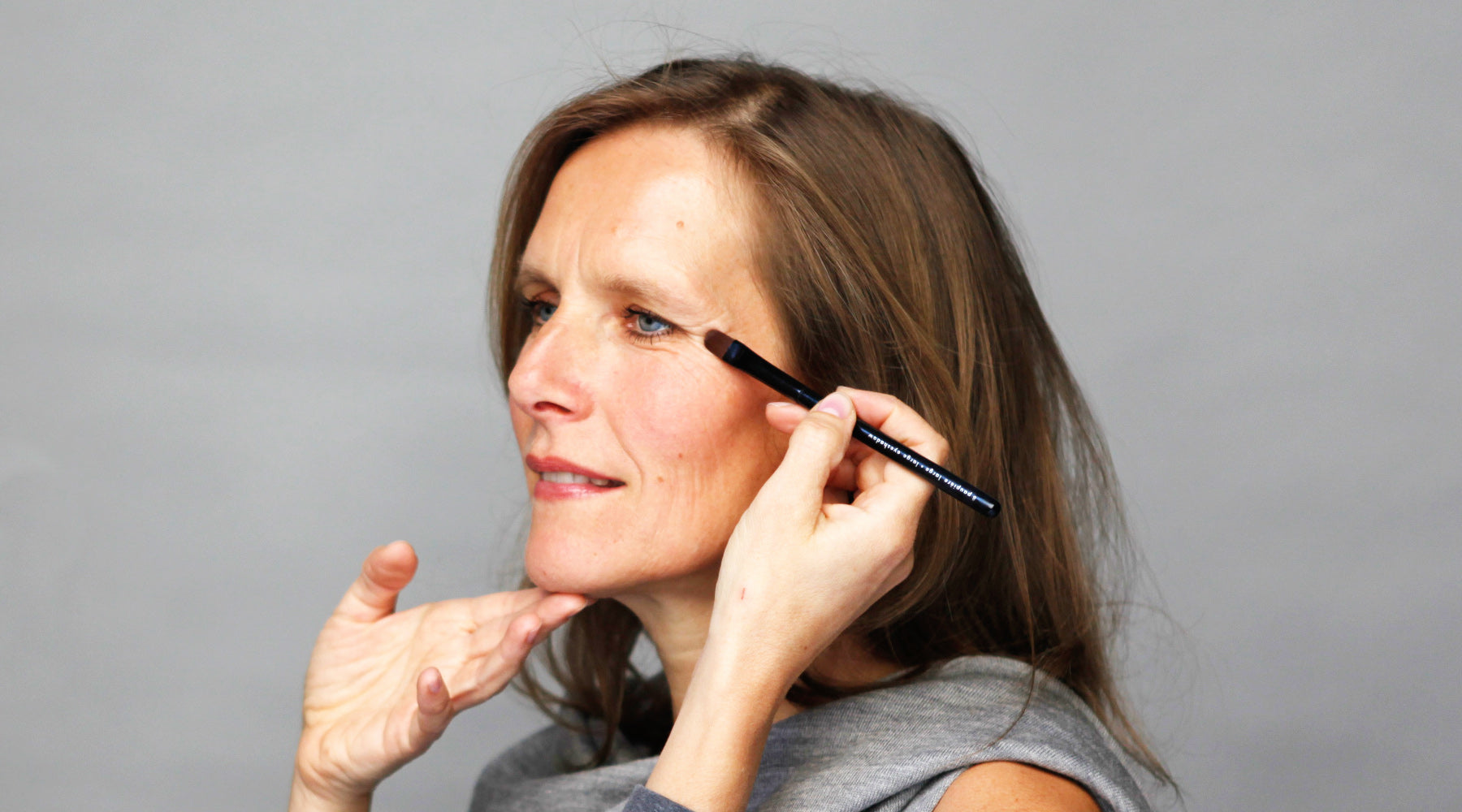
Choosing your foundation colour: 5 essential rules
Why is it so important to find the perfect shade of foundation?
For a fresh, natural look, you obviously need to go for the best foundation texture, one that's radiant and hydrating. But it’s as important to find the perfect colour. Ideally, the shade of your foundation should blend invisibly into your skin.
Having found the perfect colour means you can apply less product, for a more transparent, natural look.
You also have the option of not applying your foundation all over the face but only where you feel you need it, especially if you have naturally rather even skin.
For example, you could apply a bit to the nose and around the nose, or under the eyes to soften darkness. For my personal make-up, I often do this. A tiny amount just where I need a little coverage, blending well, and that's it. As the colour of my foundation matches my skin tone perfectly, the product won’t be visible at all.
Why is it so difficult to find the perfect shade?
Many of my clients share with me their frustration at the challenge of finding the perfect shade of foundation. But what makes it so difficult?
For one thing, lots of brands offer foundation shades that aren't very natural: often too pink, or too yellow, or too grey. Matching these shades to your skin proves impossible.
But let's say you've found a brand that offers a nice range of natural shades...
So you're wondering where to test the colour, and how to know if it's the right one...? How do you find the perfect match for your skin tone? Here's my 5-rule technique, and you'll discover that it's not as complicated as that... ;-)
Rule no. 1: Choose the right place to test your shade
We often hear that you should test colours on your forearm. But when you compare the skin tone on your hands and arms with your face, you'll realise that it's very different.
In fact there's no other option: in order to find your match, you have to test the foundation on your face.
Looking closely at your face, you'll see that the colour of your skin is not the same everywhere:
The nose might be a bit reddish, the cheeks tend to be rosy and the forehead sometimes a bit more tanned. In the end, we are dealing with a multitude of colours on our faces (which is one of the reasons to wear foundation ;-)).
The solution I've found (through many years of working as a professional make-up artist) is to look at the lower half of the cheek, near the jawline, the area between the mouth and the ear. In my experience, most people have a more neutral skin colour here, which can be used as a reference to even out the skin tone.
Rule no. 2: The right technique for determining the ideal shade of foundation
I apply a small drop of foundation to this area and blend it in. If the colour is right, the product will become invisible. If, on the other hand, you see a light or dark spot, pink or orange, the shade isn't 100% right for you and you need to keep looking.
Rule no. 3: Look for the right light conditions
Light plays a very important role when it comes to choosing the colour of your foundation. Artificial light, often found in perfume shops and department stores, changes colours. Often towards yellow (soft, cosy lighting) or green (neon lighting). It's impossible to tell whether a colour is right or wrong. Only daylight allows you to see colours in a neutral way.
The solution is to go out into the street with small quantities of the products you want to test, for example in drops on the back of your hand. In daylight, do as I described above and check the results with a small pocket mirror.
Rule no. 4: Forget the famous skin 'undertone'...
You've probably already heard about this mysterious skin undertone. Determining whether you're cool, warm or neutral would make it easier to find the ideal shade of foundation. In my opinion, this analysis is an unnecessary diversions that complicates things considerably.
First of all, in my experience, the vast majority of people have skin that's more 'golden' than pink, so they tend to fall into the 'warm' category*. Really pink skin is rare; it's almost exclusively redheads who have it.
But there are so many variations of 'warm', the cheek colour test is still a must.
(*I'm only talking about Caucasian skin here, because it's even more complicated for black or combination skin. I'm going to dedicate a separate post to them, a little later, when I've added shades for these skin tones to my range of products. For the moment, for budgetary reasons, I'm unfortunately obliged to limit myself to very few shades.)
Rule 5: Avoid these common mistakes when choosing your foundation
The mistake I see most often is a shade that's too dark. Sometimes it's expressly chosen to be too dark for a "bronzed" or healthy glow effect. But foundation is not a good way to simulate a tan, because it's too volatile and not long-lasting enough. You'll soon end up with spots, which are clearly visible because of the contrast with the lighter colour of your skin.
Shades that are too light won't do you any good either, as they can give you a greyish look, due to the darker colour of your skin showing through the foundation. And beware of concealers, which are often recommended as too light by perfume shop assistants.
Finally, shades that are too pink will look very 'made-up', even if the texture of the product is natural, simply because the colour looks 'fake' and there is a very visible demarcation towards the neck, décolleté and other parts of your skin that are visible.
Finally, shades that are too grey - and this seems fairly obvious - won't look very good on your skin.
The perfect shade of foundation is the key to natural make-up!
By following these 5 rules, finding your perfect shade should be a lot easier.
- Test your product on the lower half of your cheek (because you're going to apply it to your face and not your hand ;-)
- Apply a small drop and blend it in. It should blend into your skin completely invisibly.
- Do your test in daylight, as artificial light changes colours.
- Don't make life difficult for yourself by looking for values such as the "undertone" of your skin...
- Don't make the mistake of choosing a shade that's too dark, too light, too pink, too yellow, etc.
Book a coaching session to help you find your ideal shade
For those who still can't seem to get it right, there's still the option of calling in a professional, like me, for personalised advice. Choosing the ideal shade of foundation is one of the key stages in my Beauty Coaching sessions. In most cases, I can see straight away what you need in terms of foundation products. But if necessary, the session can also be the perfect opportunity to test several options to find the perfect solution.To book a beauty coaching session send me a quick message, or call me at +33618115683.


